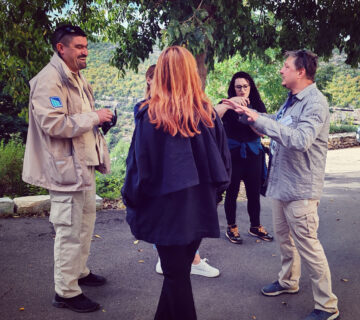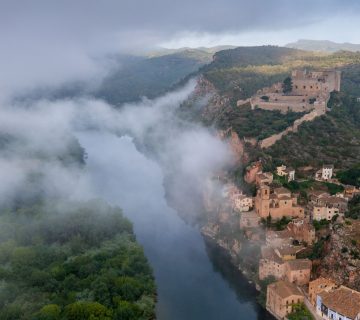How to interpret a half empty former military camp. Which story to tell, which sight to show?
A diverse group gathered in the small town of Koprivnica in North Croatia, wanting to learn about interpreting cultural heritage and help organisers get a new insight about their future plans and projects.
FUNK – a community of independent cultural associations in Koprivnica – organised a two-day workshop in September about creative presentation of inheritance with the purpose of creating a new product, like a tour, gamefied exploration or exhibit, to connect the community with interpreting.
The workshop was held by Iva Silla, an Interpret Europe certified trainer who is the author of the tours at Secret Zagreb and coordinator of the Croatian team on Innoguide, a European project for lifelong education of tour guides. The workshop was organised as part of the project, ‘FUNK centre outside of centre’ founded by the EU from European social fund.
I had been interested in doing an interpretation course for a long time. I had completed good tour guiding courses and have a background in marketing but still didn’t take a chance to participate in any interpretation courses. Then Covid-19 forced us to cut our workload so I decided to join this opportunity in the nearby city of Koprivnica.
At first I was surprised about the group coming from all different parts of culture and being very different in age and views. Only later I found out that this was the intention of the organisers. FUNK is a community of different cultural organisations which all reside in a once-busy military complex – now a new space of the city of Koprivnica dedicated to higher education, entrepreneurship, and culture. Among these emptied socialistic, high utility buildings there is a wish to make a new centre – a cultural centre of the city. The organisers wanted to provide education about interpreting to members of their organisations, but also to draw some outsiders who could give fresh ideas and attitudes to their revitalisation of the space. So it proved to be an excellent learning opportunity because we were not just on a course but handling their real situation.
The workshop provided a great exercise in all parts of interpretation. It’s easy to interpret when you have a great sight in front of you, a big historic monument, or story that is interesting and important.
So a hard task was upon us! Right up until the very end I was almost certain that we wouldn’t make it. Just two short days to explain the theory and practical examples of interpretation to us – a group of absolute beginners with the terms of interpretation, and then exercises and discussions on the concrete situation of our organiser. I was sure it would be impossible without a great effort from our trainer. Iva was very precise in her teaching and always had such good practical examples that made everything so clear. I think I can say in the name of all in the group that we were quite surprised how much we learned, how we made realistic projects, and learned from our diverse experiences. We found many interesting stories to tell and share about the history and future of the space and the urban transformation that is happening there. But you will have to visit yourself to find out more. Hopefully in the future the new campus area will be an interesting stop to visit in developing the touristic story of that part of Croatia among providing cultural events for locals.
Vladimir Leninger is a tour leader leading groups in Croatia and Europe and is also trying to provide accommodation in Zagreb with a twist – providing an experience of local culture already in the room. You can reach him at: leninger@gmail.com.
To cite this article: Leninger, Vladimir (2020) ‘Interpreting urban transformation in Koprivnica’. In Interpret Europe Newsletter 4-2020, 24.
Available online: https://www.interpret-europe.net/fileadmin/Documents/publications/Newsletters/IE_newsletter_2020_4_winter.pdf




